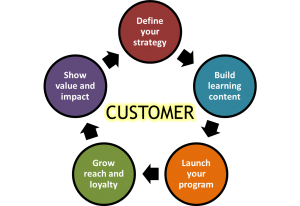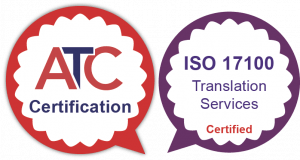At Comms Multilingual, we are very interested in the latest developments within the assessment and certification industries. To that end, we are asking industry experts to provide guest contributions to our blog, which we hope will be of interest to our community.
This post is the fifth and final in a series from Christine Yoshida, President & Principal Consultant of Enlitefy, Inc.
With over 20 years’ experience with some of the largest program sponsors in IT, Christine has in-depth expertise in creating, launching, and managing successful certification programs that benefit millions of IT workers around the world for Apple, Intel, Cisco, Microsoft, LinkedIn, and Blue Jeans Network. Christine also offers training and certification consulting services through Enlitefy, Inc.
In this post I’ll give you suggestions on how to measure the business impact of your program. This step is important to complete so that you can secure ongoing investment in your program and communicate real-world value to your target audience.

There are two main types of metrics that I recommend you track: those that track operational success, and those that demonstrate customer success. Let’s take a look at these in more detail.
Operational Metrics
To make sure you are operating your program efficiently and effectively, there are several different metrics you can track over time. On at least a quarterly basis prepare an operational review that covers such metrics as time to market, development and delivery costs, and whether you are meeting planned timeline and budget commitments.
Also include quality scores for your learning content and delivery experience. You can use a satisfaction survey that measures the quality of the content and delivery method. For example, if your training is delivered by instructors ask learners to rate the instructor’s effectiveness; if the content is self-paced e-learning ask users to rate their satisfaction with the format and access method. For live classroom and exam delivery ask participants to rate the venue and logistics; for virtual classroom ask customers about their satisfaction with the online learning environment.
Customer and Business Success Metrics
Many software-as-a-Service (SaaS) companies have embraced a “customer success” approach to their business. A satisfied, successful customer is more likely to renew their business over consecutive years. It’s important to identify key metrics representing customer success that you can track over time for your program. Even if your organization is not a SaaS business, you’ll find that a customer success mindset can point you to metrics that will be powerful in demonstrating the value of your program.
The trick is to select metrics that are relevant to your particular customer and service. For example, if your organization sells web conferencing services that renew on an annual basis, the metrics you’ll want to track would be those that show the impact of your program on “customer engagement.” Engagement could be measured as the number of web conferences scheduled each month for customers who took training or earned certification. In this example it might be possible to measure customer engagement before the customer began your program and then after they completed it. You could then compare their engagement to customers who did not participate in your program during the same time period. You could also track the correlation of program completion for all users in a given customer account to that account’s renewal of the web conferencing service.
Some products and services are more difficult to measure engagement for. In this situation, you could look at user engagement and satisfaction metrics for you program. A survey in which you ask participants to rate different aspects of your program and how it has helped them succeed will provide you with relevant metrics. You can also track growth in the number of participants over time to gage program success. And remember to use LinkedIn to track the number of jobs that reference your certification program and the number of user profiles that list your certification.
Want to Learn More?
Although this is the end of my blog post series, it’s just the beginning of your journey to create and run a successful certification program. If you have questions or want to learn more about any of the topics I’ve covered, contact me on LinkedIn.




